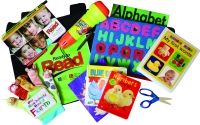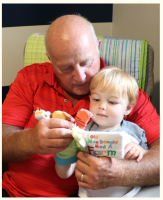Never Too Early: Reading in the NICU
Toledo Lucas County Public Library
Innovation Synopsis
At the ProMedica Russell J. Ebeid Children’s Hospital, 72 beds await babies born with challenges that make it too difficult to survive outside the womb unassisted. The Library’s Ready to Read program gives these children and their families a precious avenue for bonding and growth as the reading specialists work with families, first in-person and now virtually.
Challenge/Opportunity
To spend time in a neonatal intensive care unit (NICU) is to accept a new birth story where there are no baths to give, no late night feedings and no introductions to grandparents and siblings. Parents acutely feel the limitations on their ability to touch, care and feed. Librarians teach parents the importance of reading to their newborn babies and provide them the tools — free books and guidance — without asking them to leave the hospital. It is the restoration of a parenting act — one that is constructive and strengthening — through simply reading a story.
Key Elements of Innovation
The Ready to Read program librarians teach parents and caregivers the importance of talking, reading, singing, writing and playing with children with intentionality. When librarians meet with the NICU parent group about once per month, this is the type of information they pass on: how the sound of a parent’s voice simply reading a story can be a genuinely beneficial act to their baby’s learning and development. They also provide training at Metroparks, the zoo, YMCAs, malls, laundromats and the bus.
Achieved Outcomes
- More than 1,100 families trained per year were provided with age-appropriate early literacy materials .
- NICU parents John and Alysha Vergowven: “Even though we are both elementary school teachers, we didn’t realize how early you could start. I figured it would take about a year before my babies could understand what I was saying and for the story to have any value. But I learned it’s about hearing our speech and the way speech sounds. That way when they start speaking, they’ll already have a model.”


